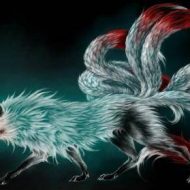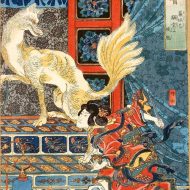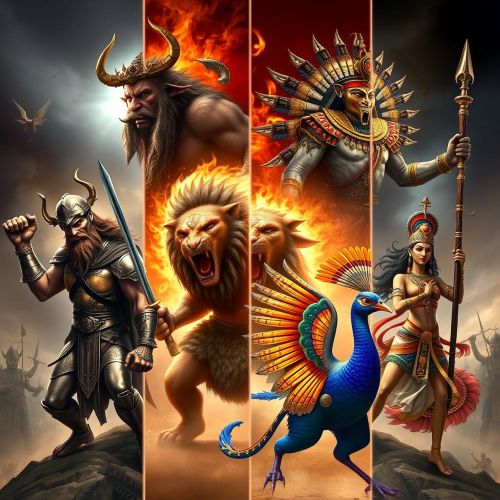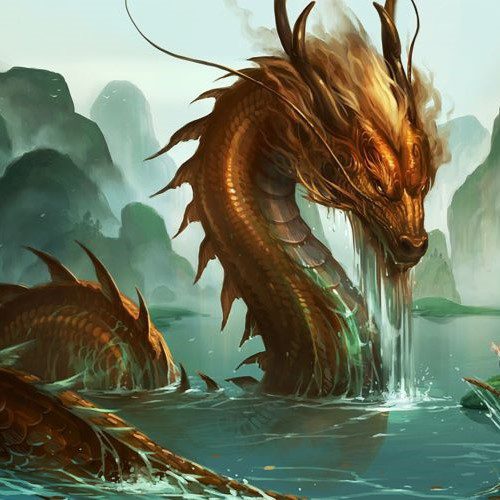Kumiho : The 9 Tailed Fox
At a glance
| Description | |
|---|---|
| Origin | Korean Mythology |
| Classification | Animals |
| Family Members | N/A |
| Region | South Korea |
| Associated With | Shape Shifting, Evil |
Kumiho
Introduction
In Korean mythology, the Kumiho, or Gumiho, stands out as one of the most intriguing and multifaceted creatures. Translating to “nine-tailed fox,” this mythical entity embodies both allure and danger. Unlike its counterparts in Chinese and Japanese mythology—the Hulijing and the Kitsune, respectively—the Korean Kumiho is often depicted with a more sinister nature. Over centuries, this enigmatic figure has inspired a plethora of stories, artworks, and modern interpretations.
This shapeshifting entity, known as kumiho (구미호), is a nine-tailed fox spirit embodying duality as both a cunning predator and a symbol of alluring beauty. Typically appearing as a beautiful woman or a young girl, the kumiho is believed to have a deep connection with the moon and can control it. The kumiho, unlike other fox spirits, does not possess spirit possession abilities but instead kills and consumes its victims.
Numerous tales in the encyclopedic Compendium of Korean Oral Literature describe the kumiho’s exploits. Its true form is a nine-tailed fox, and if its identity is revealed, it will flee. Dogs can see through its disguise and will be hostile toward it. Although young virile men are its favorite prey, stories sometimes describe the kumiho snacking on children.
Physical Traits
A Kumiho is often portrayed as a supernatural being resembling a fox with nine tails, symbolizing both beauty and danger. This mythical creature possesses immense power and intelligence, gaining additional tails as it ages, each signifying heightened magical prowess. In its natural form, the Kumiho is a magnificent fox with nine majestic tails, marking its age and power.
The Kumiho’s true power lies in its shapeshifting ability, allowing it to transform into a stunningly beautiful woman with an otherworldly aura. Despite this transformation, it retains some fox-like features, such as paws, fox ears, or tails. Legends suggest subtle hints of its true form remain, like fox-like eyes or a faint scent of something wild.
In many tales, the Kumiho’s ability to assume the appearance of a young and beautiful woman is central to its deceptive nature. Descriptions of the Kumiho’s true form vary but often include glowing red eyes, sharp claws, and fur that is either pure white or vivid red. These traits emphasize its otherworldly and dangerous nature, with the nine tails symbolizing its supernatural abilities and transformation from a mere fox to a near-divine entity.
Family
In Korean folklore, the Kumiho is not typically associated with familial structures like other mythological creatures. However, some stories hint at connections among fox spirits, suggesting that a Kumiho could be the offspring of a fox spirit that has achieved enlightenment through good deeds or spiritual practice.
Often depicted as a solitary being, the Kumiho wanders alone, although interactions with other supernatural entities do occur in various tales. These encounters can portray the Kumiho as either a misunderstood entity seeking redemption or a malevolent spirit preying on humans. Unlike mythological creatures that exist in packs or covens, the Kumiho’s solitary nature is emphasized, possibly due to its predatory behavior or the burden of its desires.
Some folktales mention a Kumiho seeking a mate, but these stories often end tragically for the human involved. The Kumiho is part of a broader family of East Asian mythical creatures, similar to the Chinese huli jing, the Japanese kitsune, and the Vietnamese hồ ly tinh. These fox spirits, believed to have lived for a thousand years, all possess the power of shapeshifting.
Other Names
The Kumiho, known by various names in different regions and contexts, holds a prominent place in Korean folklore. One common alternative name is “Gumiho,” another transliteration of the same Korean word. In literary and folkloric narratives, it is sometimes referred to as “Yeowoo Gu-seul,” signifying “fox bead,” a significant element representing the creature’s soul or a source of its power in many stories. Comparisons with similar mythological creatures in neighboring cultures, such as the Chinese “Huli Jing” and the Japanese “Kitsune,” are frequent. Despite these parallels, the Kumiho stands out in its generally malevolent portrayal, contrasting with the more nuanced or even benevolent depictions of its counterparts in Chinese and Japanese folklore.
Beyond its primary names of Kumiho and Gumiho, the creature is recognized by its literal translation, “nine-tailed fox.” In different regions and cultures, it may be known by other names, such as the Japanese “kitsune” or the Chinese “huli jing.” Each name reflects a distinct facet of the Kumiho’s nature, showcasing its diverse interpretations across East Asian mythology. Whether depicted as a cunning trickster or a fearsome predator, the Kumiho continues to captivate imaginations and inspire stories across various cultural landscapes.
Powers and Abilities
In Korean mythology, unlike in China and Japan where similar creatures may have varying alignments, the kumiho is predominantly depicted as malevolent. Associated with amorality, these fox spirits are known for their sinister deeds, including the use of magical “yeowoo guseul” marbles to absorb vital energy through a form of “deep kiss.” While ancient legends hint at the possibility of kumiho aiding humans, contemporary portrayals emphasize their consumption of human organs, often acquired through deception. Unique among East Asian fox spirits, kumiho maintain a consistent nine-tailed form throughout their existence. According to folklore, a thousand years without consuming human flesh may grant a kumiho the opportunity to transform into a human, driven by the persistent desire of its soul.
Central to the kumiho’s mythos are its extraordinary powers, notably its mastery of shapeshifting. Primarily assuming the guise of a captivating woman, the kumiho employs this ability to lure unsuspecting prey. Moreover, it possesses superhuman strength and speed, enabling it to overpower victims effortlessly. Alongside physical prowess, the kumiho wields illusion and manipulation techniques, enhancing its capacity to ensnare and deceive. Some narratives attribute to it the control of foxfire, a mystical flame with hypnotic or destructive properties. Immortal and possessing regenerative abilities, the kumiho is virtually indestructible, further enhancing its aura of terror and mystique.
Modern Day Influence
The influence of the Kumiho in modern Korean culture transcends its origins in ancient mythology, permeating literature, television, film, and various other forms of media. The complex character of the Kumiho, embodying both beauty and terror, has made it a compelling subject for contemporary storytelling. In South Korean dramas, such as the popular series “My Girlfriend is a Gumiho” (2010), the Kumiho is often reimagined with a sympathetic twist, subverting its traditional portrayal as a malevolent fox spirit. This trend reflects a broader cultural shift towards nuanced characterizations, where mythical beings are endowed with depth and personal motivations, resonating with audiences seeking more complex narratives.
Furthermore, the Kumiho’s presence is prominent in Korean comics (manhwa) and video games, solidifying its status as an iconic and enigmatic figure in popular culture. These adaptations offer diverse interpretations of the Kumiho, depicting it as both antagonist and protagonist, exploring themes of redemption, forbidden love, and the struggle against its predatory nature. Through its frequent appearances across various media, the Kumiho continues to captivate audiences, showcasing its enduring relevance and adaptability to modern storytelling techniques.
Beyond Korea’s borders, the global popularity of K-dramas and the Korean Wave (Hallyu) has introduced international audiences to the allure of the Kumiho, fostering cross-cultural exchanges and reinterpretations of its legend. As the Kumiho’s stories are shared and adapted around the world, its dual nature – feared yet revered – resonates with audiences from diverse cultural backgrounds, contributing to its ongoing legacy in global popular culture. Through its evolution in contemporary media, the legend of the Kumiho serves as a bridge between tradition and modernity, enriching the cultural landscape with its timeless allure and captivating narratives.
Related Images
Frequently Asked Questions
What does a kumiho do?
The Kumiho can shapeshift into a beautiful woman to lure men into their trap. They then eat the organs like liver and heart of the victims.
Is kumiho and kitsune same?
No. The kumiho is a Korean evil being with predatory intentions towards humans while the kitsune is a Japanese creature that althogh similar does not possess the natural evil tendencies of the Kumiho.
Is Kumiho male or female?
The Kumiho is neither male or female and can take up the shape of either male, female or hermaphrodite to achieve their objectives.
Does Kumiho harm humans?
Yes. The Kumiho are evil beings that harm and eat human beings.
In which movie did a kumiho appear?
The Kumiho was shown in the Marvel movie Shang Chi although it is argued that it was the Chinese version or Gumiho.












